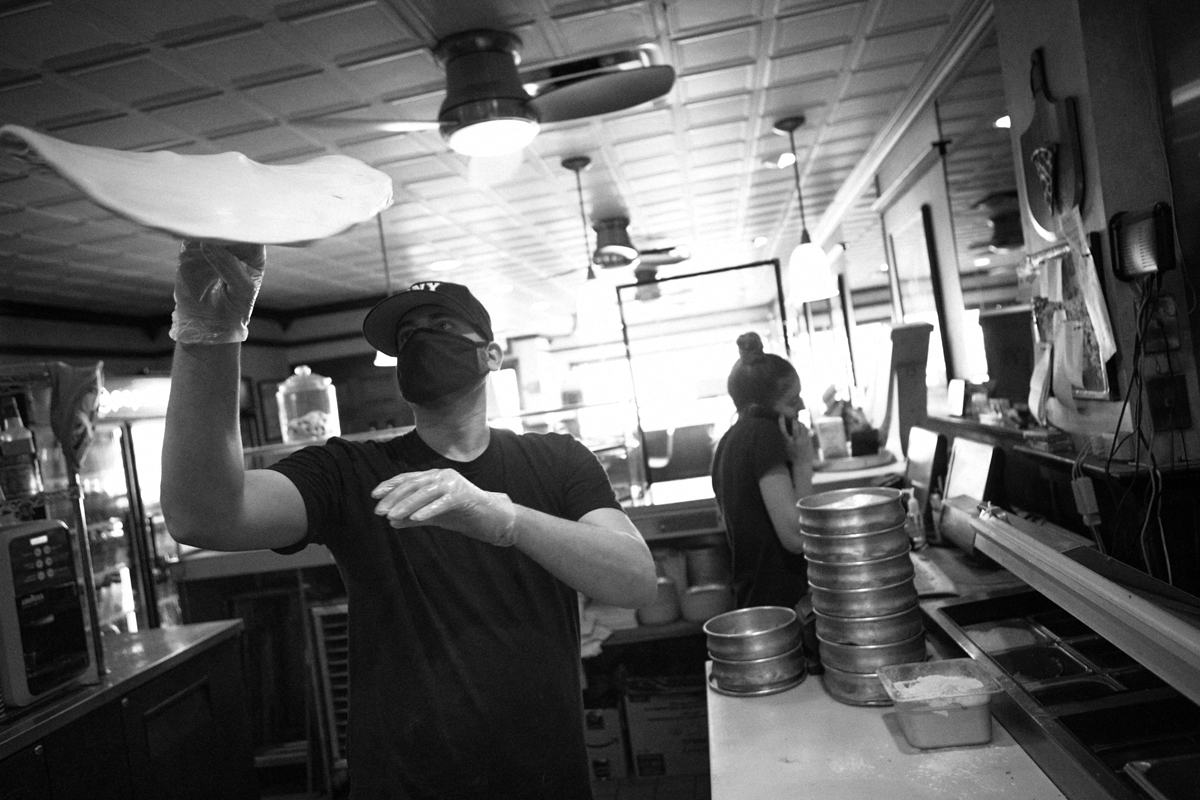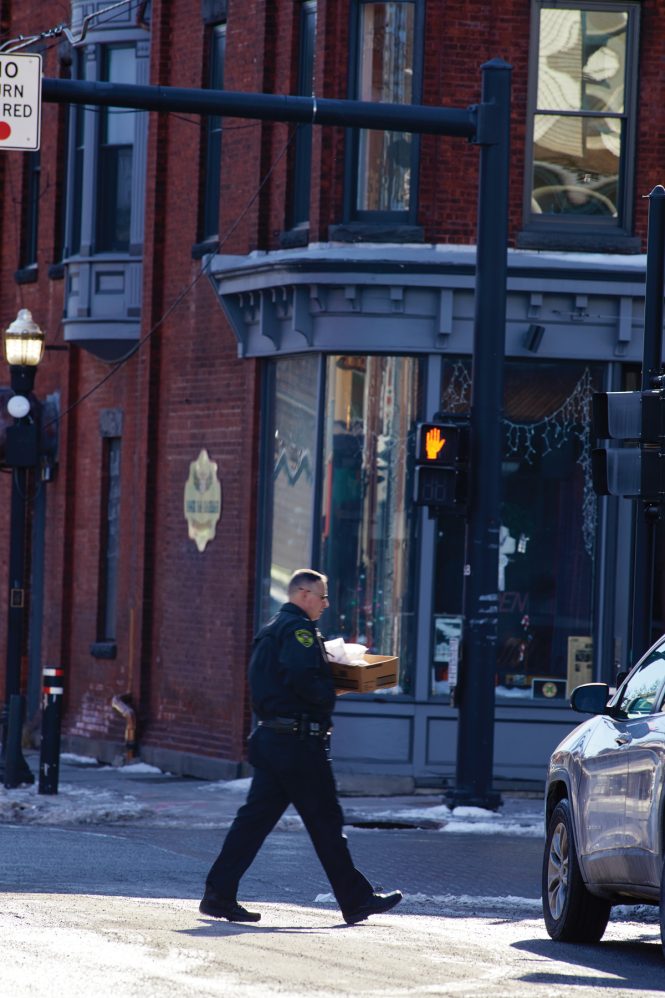Saugerties: Making History
By Anne Pyburn Craig | Photos by David McIntyre | Spring 2023 | Community Spotlight
In 1710, the area welcomed one of the largest groups of immigrants to arrive during the 18th century in the persons of some 300 families from Germany’s Palatine region. The group settled on both shores of the Hudson; the ones who landed in present-day Saugerties set about doing some logging for Queen Anne of England and opening their own mills among their largely Dutch and British neighbors. Residents who prospered built houses of stone, some of which still stand. In 1777, this was where the British fleet of Major-General John Vaughn dropped anchor after burning nearby Kingston, setting alight the sloops in the harbor and a few homes and barns—only to leave less than a week later after learning of Burgoyne’s surrender at Saratoga, never to plague the Hudson Valley again.
Some of the descendants of those early settlers are still here. Why leave? Henry Barclay’s mill and ironworks was a modern marvel. When iron and timber declined, there was still plenty of trade and manufacturing—ice harvesting, brickmaking, and the fine local bluestone, much of which found its way to New York City sidewalks, could keep a family fed. Martin Cantine’s Paper Company was world-renowned, and would prosper into the 1960s. When it closed, there remained a charming park that would grow, as the Cantine Veterans Memorial Complex, into a 127-acre multisport recreational complex.
A sculptor named Harvey Fite, working from the early 1940s until his death in 1976, made “one of the largest and most beguiling works of art on the entire continent” according to Architectural Digest. Now a nonprofit sculpture park devoted to Fite’s legacy, Opus 40 also hosts numerous events and concerts each year; Rolling Stone describes it as “the best outdoor performance venue in the Northeast.” The nonprofit recently acquired Fite’s historic home, adjacent to the 6.5 acre park, which will be renovated and opened to the public.
HITS, the international show jumping competition, hosts competitions from May through September, and Upriver Studios, a large-scale woman-owned film and TV production studio, has a long list of local vendors and talent on tap. A team of locals is working to create a mixed-use destination venue at the 800-acre Winston Farm, just across the street from Thruway Exit 20; they’re making progress, but environmentalists and preservationists have been holding their feet to the fire of best practices every step of the way.
Another proposal, from Kampgrounds of America’s Terramor division, would have turned a 77-acre woodland into a glampground resort on the Woodstock/Saugerties border. Signs opposing the project popped up everywhere, and nearly 200 organized locals turned out at a planning board meeting to vocalize concerns about traffic, noise, light pollution, and the health of a seasonal creek that would have dumped treated effluent into a ceremonial pond used by the Woodstock Jewish Congregation, making it clear that they weren’t going away. In February, KOA announced that they were abandoning the idea, and activists are now raising money to purchase the parcel for a nature preserve.
The Saugerties Scene
Lifelong resident Kelly Ryan and a few of her friends had headed to Lake George for Winterfest a few times and found themselves wondering: Why not here? The group found that a February full moon festival sounded like a great idea and the first annual Snow Moon Festival took place in early February, featuring a slew of family-friendly activities, much of it free. The festival proceeds went to the community’s food pantries.
“Our sponsors have been amazing,” Ryan says. “And so many clubs and nonprofits organized events of their own. People with all different interests, all different skills, from all different age groups and friend groups came together to just do something wonderful, with no barriers.”
Saugerties is loads of fun to explore. Landmarks like the Orpheum Theater (now run by Upstate Films), Saugerties Lighthouse, Esopus Bend Nature Preserve, and Opus 40 offer a multitude of ways to work up an appetite, which can be satisfied in fine style at a variety of eateries: the Dutch Ale House, Miss Lucy’s Kitchen, and Lox of Bagels are all local favorites. Ryan and her crew are huge fans of the Southwestern menu at the Main Street Restaurant. For a grass-fed burger, try Buns Burgers out by the Thruway; for late night fare, check out the Cajun tuna or the fish tacos at the Pig Bar & Grill. Amongst all of this you’ll find stellar art galleries (Jane Street Art Center, Emerge Gallery) and multiple flavors of antiques, along with a fine indie bookstore (Inquiring Minds) and full-service shoe store (Montano’s.)
The Saugerties Housing Market
“Honestly, it’s been very busy since the new year,” says Angelica Ferguson, a listing agent with Four Seasons Sotheby International Realty. “The last quarter of 2022 was pretty slow because of the big rise in interest rates, so I don’t think we really expected January to start off with such a boom. But it’s been very hot again up here.”
Turnkey properties that are priced right, she says, are still drawing multiple offers in the first few days of listing. “Something that needs work or is priced aggressively might last a few weeks, even months, and I don’t think we’ll see the 30 percent year-to-year increases that we’ve had the last couple of years, but generally prices are still rising a bit, slowly but steadily, and inventory is extremely low.”

Downtown Saugerties has a quintessential village feel. Photo by David McIntyre.
At press time, possibilities included a three-bedroom raised ranch and a cottage in the Platte Clove foothills for under $200,000. In the $300,000-to-$500,000 range, one could find three- and four-bedroom ranch homes in good shape; a sunny four-bedroom in the village with Catskills views; and the 1840 Mill Keeper’s House, perched on a bluestone bluff and overlooking a waterfall, part of the Cantine’s Island Cohousing compound.
For $679,000, a buyer could snag an “immaculate” three-bedroom home on 21 acres of Blue Mountain meadow and woodland, with a big sunny kitchen and a brick fireplace fitted as a woodstove. A three-bedroom custom home on six acres with saltwater pool, gourmet kitchen, oak floors with radiant heat, and panoramic mountain views was priced at $895,000.
Right around $1.5 million, you could own a “mountain oasis”: a four-bedroom at the end of a half-mile private driveway on 11 acres adjoining state land, with views stretching into four states.
